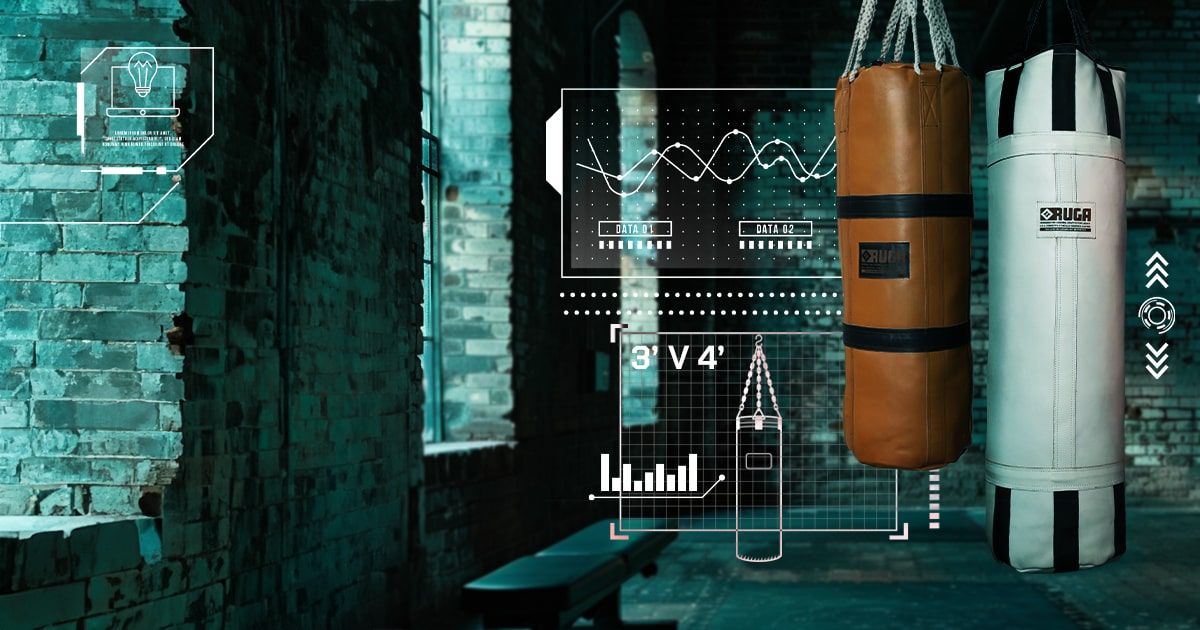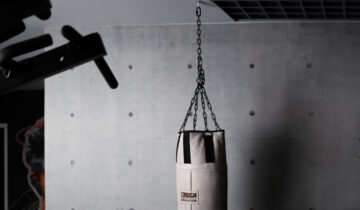When it comes to equipping your home gym or training space, the size of your punching bag is a crucial factor that can significantly affect your workout. The common sizes — 3-foot and 4-foot — offer different benefits and challenges. Understanding these differences can help you choose the perfect bag for your training needs and mounting options.
The 3-Foot Punching Bag
Pros:
- Space-saving: A 3-foot bag is ideal for smaller spaces. Its compact size requires less room, both in terms of height and the swing radius.
- Speed and Technique: Due to its lighter weight, a 3-foot bag swings more readily, which is excellent for practicing speed and technique. It’s perfect for working on your jab, cross, and footwork.
- Ideal for Light Workouts: If your focus is on light, technical sessions or if you’re a beginner, a 3-foot bag is more forgiving and easier to manage.
Cons:
- Limited for Power Training: The smaller size and lighter weight mean it absorbs less impact, making it less suitable for those looking to practice powerful strikes like heavy hooks or uppercuts.
- Reduced Surface Area: There’s less surface to work with, which might limit the diversity of combinations and body strikes.
The 4-Foot Punching Bag
Pros:
- Better for Power: A 4-foot bag typically weighs more and has a larger surface area, which makes it better suited for power punches and combinations.
- Diverse Training: The extra length allows for a greater variety of strikes, including lower body shots for a more comprehensive workout.
- Stability: Its increased weight offers more resistance, making it less prone to swinging wildly, providing a stable target for consistent striking.
Cons:
- Requires More Space: Both the height and swing of a 4-foot bag necessitate more room. It’s something to consider if your training area is limited.
- More Intimidating for Beginners: Newer practitioners might find the heft and resistance of a 4-foot bag more challenging to work with as they’re developing their technique.
Making Your Choice
Consider Your Space: First, assess how much room you have. A bag that’s too big for your space won’t serve its purpose if it restricts your movement or the bag’s swing.
Assess Your Training Goals: If speed, agility, and technical precision are your priorities, a 3-foot bag will serve you well. Conversely, if you’re looking to build power and incorporate more varied strikes, a 4-foot bag is preferable.
Think Long-Term: While beginners might lean towards a 3-foot bag, consider your long-term goals. As you progress, you might appreciate the versatility of a 4-foot bag.
Glove Weight Consideration: Regardless of the bag size, choosing the right glove weight is crucial. Lighter gloves (8-10 ounces) are better for speed and technique, while heavier gloves (12-16 ounces) build strength and endurance.
In Conclusion
Both the 3-foot and 4-foot punching bags have their place in a well-rounded training regimen. Beginners might start with a 3-foot bag and graduate to a 4-foot bag as their skills advance, while experienced fighters may prefer to train on a 4-foot bag from the start. Whichever you choose, ensure it aligns with your training objectives and physical capacity for the best workout experience.
FAQ'S
A 3-foot punching bag is excellent for improving speed and agility. Its smaller size and lighter weight make it ideal for quick, rapid-fire workouts and perfect for spaces with limited room.
A 4-foot punching bag is best suited for individuals looking to increase their punching power and work on body shots due to its larger surface area and heavier weight which provide more resistance.
While you can certainly work on power techniques on a 3-foot bag, its lighter weight and smaller size may not provide the same level of resistance and feedback as a 4-foot bag, which is better for power training.
You should ensure you have enough space for the bag to swing freely when struck, and for you to move around it comfortably. A minimum of a 5-foot radius around the bag is a good starting point.
Generally, the material and quality depend on the manufacturer rather than the size. RUGA provides high-quality materials in both 3 and 4-foot punching bags.
No, you can use the same boxing gloves for both sizes. However, the weight of the gloves can be adjusted depending on whether you’re focusing on speed (lighter gloves) or power (heavier gloves).
Yes, both 3-foot and 4-foot punching bags are suitable for beginners. Beginners may start with a 3-foot bag to work on technique and gradually move to a 4-foot bag for power training as they progress.
The height of the bag affects the level at which you can strike. A taller (4-foot) bag allows for a greater variety of punches, including lower strikes, while a shorter (3-foot) bag is typically used for head and upper body strikes.
Yes, RUGA punching bags are durable and can be hung outdoors, but make sure to protect them from extreme weather conditions to extend their lifespan.
Consider your training goals, available space, and workout preferences. If you’re limited on space or focusing on speed and technique, go for a 3-foot bag. If you want to work on power strikes and have more room, a 4-foot bag might be more appropriate.






 No products in the cart.
No products in the cart.